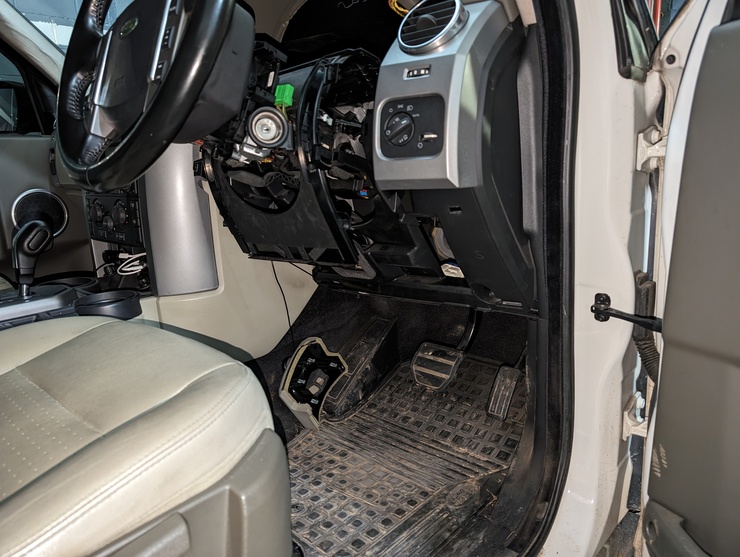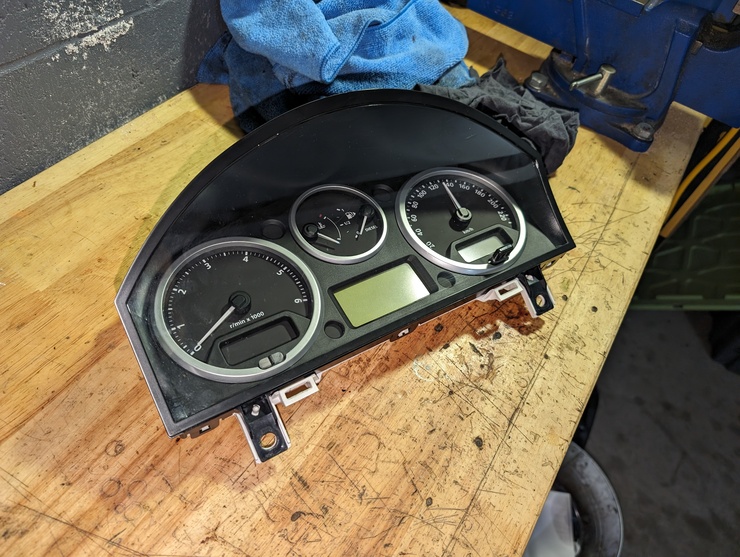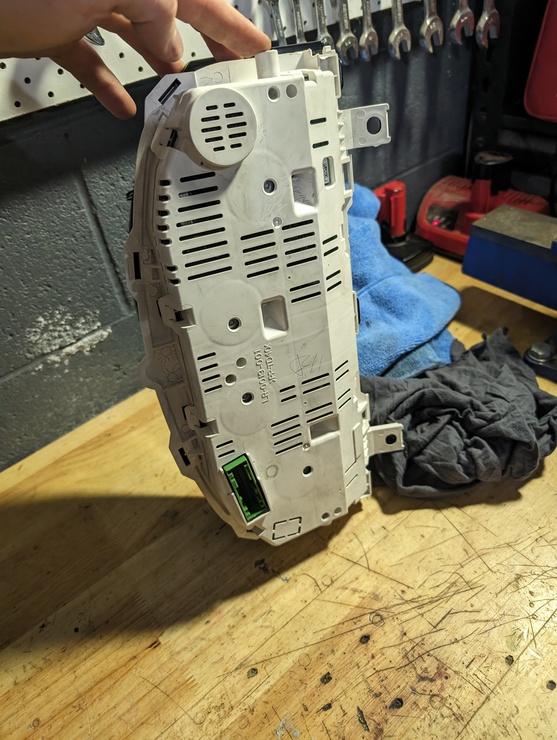Discovery 3 instrument cluster
Since buying the Discovery 3 a bit over four years ago, I’ve very occasionally noticed a little bit of weirdness from the instrument cluster. Nothing I could tie to the cluster itself - for example a “low coolant level” warning that went away after a few seconds, every few months. Once or twice, I’ve also had a spurious “air suspension fault, special programs not available” that also went away after a few seconds.
I didn’t think much of it until a recent trip, where after getting the car very wet, I parked it and restarted it shortly after only to find the entire instrument cluster dead - no gauges, no backlighting, nothing. Thankfully the car still ran fine.
The cluster was back to normal the next morning, but obviously this needed to be sorted out. I started with a wiring diagram (from the Haynes manual) which joined a few dots together - there’s one big connector at the back of the cluster, and one of the wires leads directly to the coolant level sensor (a simple on/off switch as far as I can tell). There’s also CAN wiring, which would talk to the air suspension. These disparate issues were all pointing to the cluster as the common failure point.
The bulk connectors on these clusters have some interesting failure modes as they age, including cracked solder joints and green crust from corrosion. So I proceeded to take the cluster out, which wasn’t too difficult.



After getting the cluster out, I opened up the white casing to see what I could find. I did spot a few tiny cracks in the solder joints where the bulk connector (green rectangle) is surface mounted to the cluster PCB, unfortunately too small for me to get a decent photo. I’m not set up for such a small solder pitch so I dropped it off at a local instrument cluster repairer.

I got it back a few days later, and haven’t had any issues since. The repair cost $150, so I think that justified sending it out instead of buying new soldering equipment and making this my first experiment in soldering anything this small.